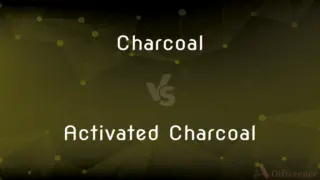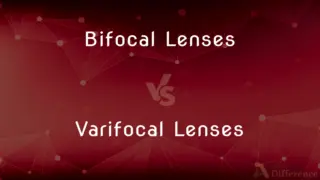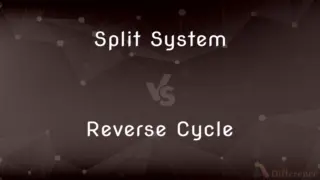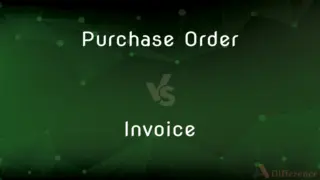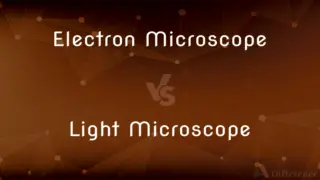Class-I Preservative vs. Class-II Preservative — What's the Difference?
By Tayyaba Rehman — Published on December 31, 2023
Class-I Preservatives are naturally occurring substances; Class-II Preservatives are synthetic compounds. Class-I is typically considered safer; Class-II may pose more risks.
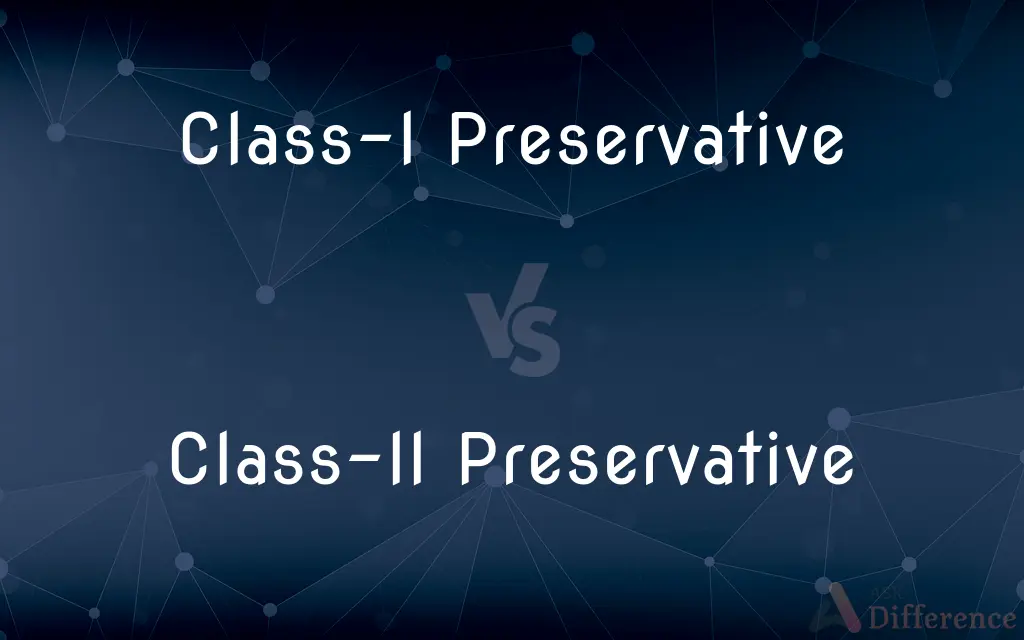
Difference Between Class-I Preservative and Class-II Preservative
Table of Contents
ADVERTISEMENT
Key Differences
Class-I Preservatives are substances that are naturally derived and have preservative properties. These compounds can be found in nature and have been traditionally used to extend the shelf life of food items. Their natural occurrence often suggests a safer profile for consumption, though it's always essential to consider the quantity and context.
Class-II Preservatives, in contrast, are synthetic compounds developed in labs. Their creation is typically for the purpose of preserving food, ensuring longer shelf life, and preventing spoilage. As they are chemically formulated, there's often more scrutiny on their potential health impacts, ensuring they are safe for consumption.
One of the benefits of Class-I Preservatives is their general acceptance by the public. Given their natural origin, they often face less resistance from consumers concerned about artificial additives in their food. For instance, citric acid, a natural preservative, is recognized and considered harmless by most.
Class-II Preservatives, due to their synthetic nature, might sometimes be viewed with skepticism by consumers. While many of these preservatives are rigorously tested and deemed safe by food authorities, there's always a segment of the population wary of synthetic additives, leading to debates about their safety and long-term effects.
In the food industry, the choice between Class-I Preservatives and Class-II Preservatives often boils down to the specific requirements of the product, cost considerations, and public perception. Some products might benefit from the potent, targeted action of a synthetic preservative, while others might prioritize the natural label and opt for Class-I.
ADVERTISEMENT
Comparison Chart
Origin
Naturally occurring substances.
Synthetic compounds.
Public Perception
Generally considered safer due to natural origin.
Viewed with more skepticism due to synthetic nature.
Typical Examples
Citric acid, salt, sugar.
Benzoates, sorbates.
Cost and Availability
Might be costlier and less consistently available.
Often cheaper and readily available.
Effectiveness & Application
Broad-spectrum but may be milder.
Potent and can be designed for specific applications.
Compare with Definitions
Class-I Preservative
Naturally occurring compounds that inhibit microbial growth in food.
Citric acid, a Class-I Preservative, is used in fruit juices to maintain freshness.
Class-II Preservative
Chemically formulated substances with preservative properties.
Potassium sorbate, a Class-II Preservative, is added to dairy products to prevent mold.
Class-I Preservative
Organic materials used in foods to prevent decomposition.
Vinegar, as a Class-I Preservative, is added to pickles to ensure longevity.
Class-II Preservative
Man-made agents used in foods to deter spoilage.
Butylated hydroxytoluene, a Class-II Preservative, is found in some cereals.
Class-I Preservative
Traditional methods of food preservation utilizing natural agents.
Using honey, a Class-I Preservative, was an ancient method to keep baked goods fresh.
Class-II Preservative
Artificial compounds added to food to prolong freshness.
Calcium propionate, a Class-II Preservative, is added to bakery items to enhance shelf life.
Class-I Preservative
Natural substances used to prolong food shelf life.
Salt has been a Class-I Preservative for meats for centuries.
Class-II Preservative
Synthetic compounds designed to extend food shelf life.
Sodium benzoate, a Class-II Preservative, is used in sodas.
Class-I Preservative
Compounds derived from nature with preservative qualities.
Sugar, a Class-I Preservative, is used in jams to prevent spoilage.
Class-II Preservative
Lab-created materials that inhibit microbial growth in foodstuffs.
Propionic acid, a Class-II Preservative, is used in some bread to stop mold.
Common Curiosities
What's the primary difference between Class-I and Class-II Preservatives?
Class-I Preservatives are natural, while Class-II Preservatives are synthetic.
Why might a manufacturer choose Class-II Preservatives?
They can be more potent, cheaper, and tailored for specific applications.
Do Class-I Preservatives work for all food products?
They might not be as potent or targeted as Class-II options for some products.
Are Class-I Preservatives always safe?
Generally considered safer due to their natural origin, but quantity and context are crucial.
Is there more scrutiny on Class-II Preservatives due to their synthetic nature?
Often, yes, there's more scrutiny to ensure their safety for consumption.
Are Class-II Preservatives always cheaper than Class-I?
Typically, due to their synthetic nature and easy production, they might be more cost-effective.
Can I find Class-I Preservatives in everyday foods?
Yes, common examples include salt, sugar, and citric acid.
Might a food product contain both Class-I and Class-II Preservatives?
Yes, depending on the product's preservation needs and manufacturer's choice.
Do all consumers accept Class-II Preservatives?
While many are deemed safe, some consumers are wary of synthetic additives.
Are Class-II Preservatives lab-created?
Yes, they are synthetic compounds developed in labs.
Are Class-I Preservatives always organic?
They are naturally derived but not necessarily certified organic.
Can I avoid Class-II Preservatives if I wish?
Yes, by choosing products labeled "natural" or checking ingredient lists.
Is vinegar a Class-I Preservative?
Yes, vinegar is a naturally occurring substance with preservative qualities.
Are all Class-II Preservatives harmful?
No, many are rigorously tested and deemed safe by food authorities.
Do Class-I Preservatives enhance flavor?
Some, like salt and sugar, can also play a role in flavoring the food besides preservation.
Share Your Discovery
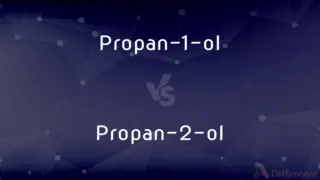
Previous Comparison
Propan-1-ol vs. Propan-2-ol
Next Comparison
Milk Pancakes vs. Buttermilk PancakesAuthor Spotlight
Written by
Tayyaba RehmanTayyaba Rehman is a distinguished writer, currently serving as a primary contributor to askdifference.com. As a researcher in semantics and etymology, Tayyaba's passion for the complexity of languages and their distinctions has found a perfect home on the platform. Tayyaba delves into the intricacies of language, distinguishing between commonly confused words and phrases, thereby providing clarity for readers worldwide.















